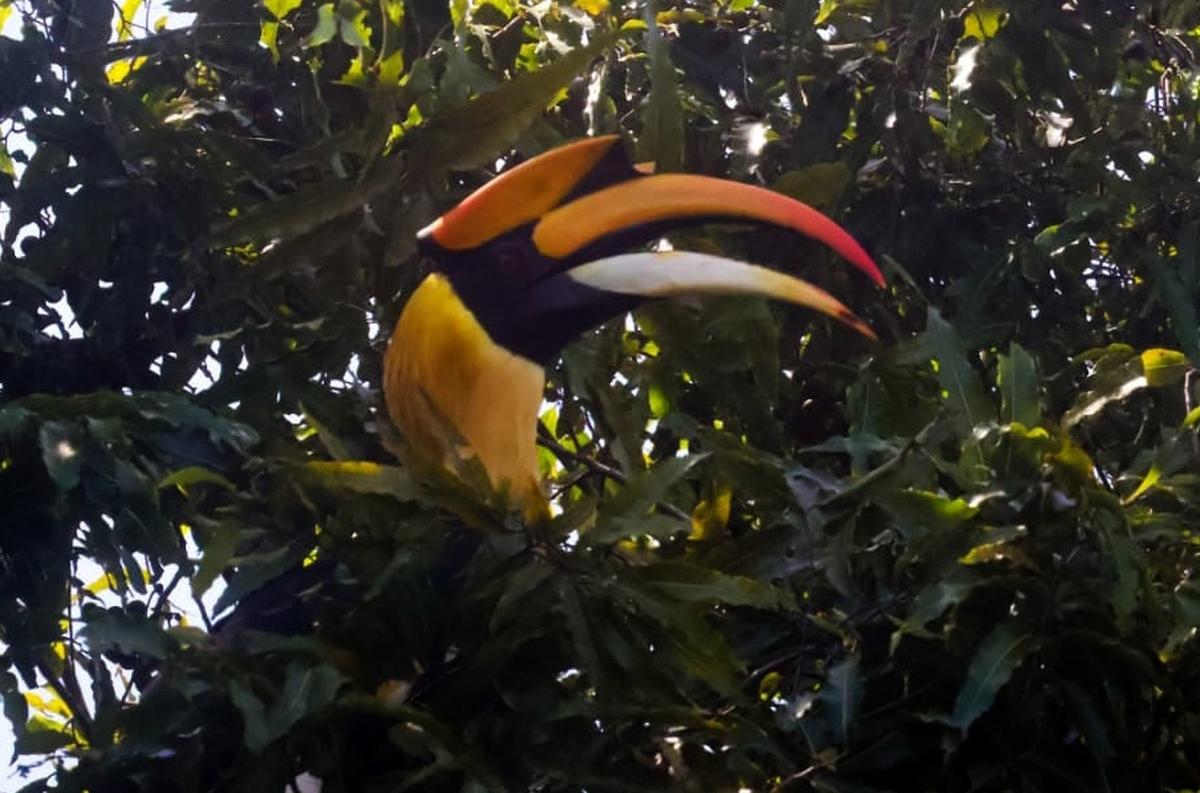
In a rare and unprecedented sighting, an adult male Great Hornbill, Kerala’s State bird and a species usually confined to the forested high ranges of the Western Ghats, was spotted in the coastal belt of Kodungallur and Kaipamangalam, just 200 m from the beach.Hornbill researcher Amitha Bachan K.H. and research scholar Aswin Krishna photographed the bird feeding on a large False Ashoka tree (Monoon longifolia), locally known as ‘Aranamaram.’ “This is the first such record from Kerala where the location is right at sea level, on an isolated tree on a sandy coastal beach,” said Dr. Bachan, founder of the Western Ghats Hornbill Foundation and member of the IUCN Hornbill Specialist Group. “Great Hornbills are usually associated with the forested high ranges, so seeing one on an isolated coastal tree is highly unusual.”A similar report emerged from Kannur in July this year, near the Ezhimala Naval Academy campus. It was also sighted once in the coastal region of Thiruvananthapuram a decade ago. Both of the earlier reports were in lateritic hillock regions near the coast, where there are large vegetation tracts similar to small patches of forest. “But here, it was a sandy beach setting, which makes this instance unique,” Dr. Bachan noted. The Great Hornbill, showing no fear of humans, was observed foraging among native fruiting trees near the residence of Sabira, staff member at MES Asmbi College, where the hornbill foundation’s Research Extension Centre operates. The researchers witnessed the bird’s distinctive feeding method - plucking fruits with the tip of its beak, tossing them into the air, and catching them in its mouth before swallowing.
Three possibilities
According to Dr. Bachan, the sighting could point to three possibilities: “First, it may be a sign of successful conservation in our core hornbill habitats like Vazhachal and Nelliyampathi, leading to increased non-nesting movements. Second, it could indicate behavioural changes, with birds becoming more tolerant of humans. Third, changing climate patterns — early rains, persistent mist, and lush vegetation — may also be influencing these movements. Each of these factors needs deeper study.” The nearest Great Hornbill populations are 35–50 km away in the Vazhachal, Vellikulangara–Anapantham, Peechi, and Nelliyampathi forest ranges. International records show that the species can travel over 100–200 km during non-nesting season.